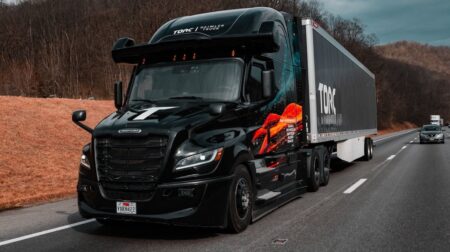In a step toward the commercial viability of fusion energy, a UK-based robotics alliance has demonstrated that part of a fusion facility’s maintenance can be carried out by an autonomous robot, thus making such work safer for humans and more cost efficient for its operator.
Claimed to be a world-first achievement, the United Kingdom Atomic Energy Authority (UKAEA), Oxford Robotics Institute (ORI) and University of Oxford successfully deployed a Boston Dynamics Spot quadruped robot at UKAEA’s Joint European Torus (JET) facility.
Until its recent scientific operational shutdown, JET was reportedly one of the largest fusion research machines in the world.
The 35-day trial aimed to demonstrate that part of the regular maintenance required of fusion power plants could be achieved by an autonomous robot.
Dr Robert Skilton, head of research at UKAEA’s Remote Applications in Challenging Environments division, said: “The project aimed to validate the reliability of autonomous robotic technology and instil trust and confidence in their use for safe and efficient inspections in fusion facilities over extended periods.”
READ MORE: Drones trialled at Sellafield to identify unknown radiation hotspots
According to UKAEA, the project could pave the way for autonomous maintenance and decommissioning in future fusion facilities where human access might be limited due to the challenges posed by radiation, vacuum-level pressure, and extreme temperatures.
JET provided an opportunity to test ORI’s autonomy platform AutoInspect controlling Spot in an environment still regarded as hazardous following two high-powered deuterium-tritium experiments in the space of three years.
The inspection tasks within JET involved mapping the entire facility, taking sensor readings of the environment, and avoiding obstacles and personnel involved in the decommissioning process.
UKAEA’s inspection payload was integrated with ORI’s localisation and mission autonomy solutions, and combined with Boston Dynamics’ hardware and collision avoidance technology to enhance the robot’s capabilities.
READ MORE: Sellafield to develop nuclear decommissioning robots
The integrated robotic system collected data on JET’s environment and overall status twice a day, which allowed the team to assess the feasibility of replacing human inspections with fully autonomous processes.
“This deployment demonstrates that autonomous robots can enhance safety and cut costs,” added Dr Skilton.
“These ‘next-generation’ solutions are becoming ready to be used in other industrial facilities such as nuclear decommissioning, environmental clean-up, and disaster relief.”
The results of the pilot will assist planning for the next stages of the JET decommissioning and repurposing programme.
Innovations and achievements in extreme environments will be highlighted and celebrated at the second annual Robotics & Automation Awards on 06 November 2024 at De Vere Grand Connaught Rooms in London. Visit www.roboticsandautomationawards.co.uk to learn more about this unmissable industry event – and to book your table!







